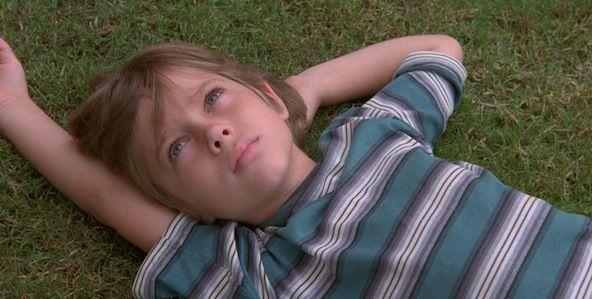My favorite scene in Boyhood features the protagonist, Mason (Ellar Coltrane), on a weekend camping trip with his dad, played by Ethan Hawke. There are no major plot revelations here, dramatic tensions or memorable one-liners. Like the rest of the film, this scene is a quiet reflection of the human spirit, untarnished by the conventions of a Hollywood screenplay.
Filmed over the course of 12 years and following the same cast the entire time, Boyhood is simply about a young man’s journey from childhood to adolescence to early adulthood. Early on, audiences watch Mason as he bickers with his sister, Samantha (Lorelei Linklater), waits in line with his friends for the newest Harry Potter book, and go from school to school as his family moves.
As Mason and Samantha grow older, they become more interested in sex, drugs and partying. Contributing to this is their parents’ separation when they were children, as well as their mother (Patricia Arquette) going through several more failed marriages during their teenage years. The film follows these characters through the different stages of their lives, allowing viewers to connect with them on a deep and emotional level.
Writer/director Richard Linklater delivers quite possibly his best and certainly his most ambitious film to date. The highly inventive filmmaker made his debut in 1991 with the cult classic Slacker, a true game changer that paved the way for other iconic indie films such as Clerks and Pulp Fiction.
While Boyhood is more plot-based than Slacker, as it does follow one main character instead of a bunch of random ones, it presents itself more as a culmination of all of Linklater’s previous works. Scenes in which Mason talk about his world views with his girlfriend will echo Slacker, while a number of other themes will certainly resonate with fans of the Before Midnight trilogy.
What really makes this film so powerful is that Linklater drew from personal experiences when crafting Mason’s character. Like the protagonist, Linklater was raised in Texas, had divorced parents, and developed an interest in the arts early on in his life. Authentic human interaction is the driving force of Boyhood.
What would’ve killed this film is if the cast had little to no chemistry. Fortunately, however, Coltrane works so well with Hawke, Arquette and Linklater that viewers feel a genuine sense of family here as the story unfolds.
At the beginning, the parents are at each other’s throats. Arquette plays the liberal feminist mother trying to provide her kids with the best life possible, while Hawke portrays the fun weekend dad who takes Mason and Samantha bowling and to baseball games. Linklater’s choice to use the same actors the entire time makes the character development all the more believable. Rather than follow the formula laid out in screenwriting textbooks, Linklater presents life as it is without any sugar coating.
Beyond the writing and acting, the visual storytelling in Boyhood makes it a truly unforgettable cinematic experience. The second shot in the film is a close-up of a young Mason lying on the ground with his head cocked to the left as he stares up at the sky. There are no words spoken, gunshots, explosions or any other devices to plunge audiences into an action-packed state of mind. Instead, Linklater introduces us to the character solely through a facial expression that conveys Mason’s wonder and confusion.
Linklater and his cinematographers, Lee Daniel and Shane F. Kelly, give us a number of other shots in the film such as this one that are not symmetrical, vibrant or what most viewers today would call eye-popping. Yet that doesn’t make these images any less extraordinary.
There are a million ways Boyhood had the potential to fail. Someone could have died at any point during the 12 years it took to make it. Other cast members might have quit the project or just retired from acting altogether. There is no doubt that these thoughts went through Linklater’s head when he began working on it. Yet, against all odds and against every precaution the cast and crew could have taken, the final product is one of the most unique and imaginative films of the 21st century and possibly of all time.








